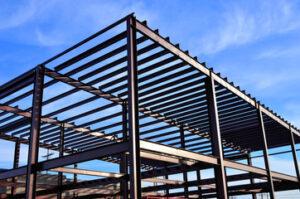Asphalt pavement, whether it is a parking lot or driveway, can become brittle without the proper maintenance. This deterioration is caused by rain, U.V. rays, chemicals and motor oil leaks.

Sealcoating prevents oxidation, stops weather damage and beautifies the pavement. It is a great investment in your property! Find out more at https://www.rochesternysealcoating.com/.
Sealcoating is one of the most important asphalt maintenance tasks that can be done, as it protects your commercial parking lot from damage and extends its lifespan. The process is relatively simple and straightforward, but it’s critical to properly prepare your parking lot before applying the seal coat.
First, assess your parking lot visually to identify any problem areas that should be repaired before the application of the sealcoat. This will include crack filling, patching and any other repairs that are needed to prevent further deterioration.
Next, clean the surface of the parking lot thoroughly with a broom or rotary scrubber. This is important because any dirt or debris left on the pavement will interfere with the adhesion of the seal coat. It’s also a good time to wash away any oil or fuel stains, as these can cause the sealcoat to crack and peel away.
Once the cleaning is complete, you can begin staging the barrels of sealcoat that will be used to cover your entire lot. Each barrel is designed to cover a certain amount of square footage, so it’s important to place them in the right spots. You’ll also need to make sure that there is enough room for the vehicles that will be parked in the area during and after the application of the sealcoat.
Lastly, you’ll need to choose which type of sealcoat you will use. There are many different options to choose from, but it’s important to do your research before making a decision. For example, oil-based tar sealcoats are cheaper than coal-tar based options, but they do not provide the same level of protection. It’s also important to find a contractor who is experienced and qualified in the process, so they can ensure a smooth and efficient application that will last for years to come.
Once you’ve chosen your materials and gotten all of the necessary equipment, it’s time to get started. It’s important to apply the sealcoat in the correct conditions, so start by picking a few days of dry weather. It’s also a good idea to close off the area to vehicles and pedestrian traffic with cones and barricades. Once the sealcoat is applied, it should cure for 24 hours before allowing vehicular traffic to return to the area.
Spray Application
A professional sealcoating contractor can use a sprayer or squeegee to apply the first coat of asphalt sealer. Spraying is a much faster application method that allows crews to cover larger lots in less time than using a squeegee. However, a reputable and conscientious sealcoating company should be able to obtain quality results with either application method.
Regardless of application method, the asphalt sealer should be mixed thoroughly with an electric mixer to achieve a uniform consistency. This is important because the right mix helps the sealer bind to the asphalt, preventing cracking under pressure from vehicular traffic.
The squeegee application method is preferred for jobs on rough or porous surfaces to pack the sealer into the surface. This may be done with a ride-on sealcoating rig with an individual squeegee or by hand using a manual squeegee. With the squeegee method, the crew can also see what areas they have covered and have more control over the thickness of the sealer.
Spraying is a quicker application method that can be a good choice for smooth surfaces with few voids to accept the sealer. Porous surfaces can suffer from a light coating applied with the sprayer, as they need a thicker coating to protect against oil and chemical penetration.
Sealcoating is essential to the longevity of your asphalt pavement, but regular maintenance is also an effective way to extend the life of your pavement. By protecting your investment, you can avoid costly repairs and even total replacement of your parking lot or driveway.
A well-maintained and properly-sealed parking lot looks inviting to customers, which can lead to more sales and higher revenues for your business. In addition, a well-maintained asphalt pavement is safe for automobiles to drive on, which can reduce the risk of accidents and injuries. With regular maintenance, your asphalt can last for up to five years and save you thousands in repairs and replacement costs.
Squeegee Application
When property owners inquire about their pavement sealing needs, they often ask whether the sealcoating company they are considering will use a spray, brush or squeegee application method. This is a valid question, as the method used can greatly impact how well the project is done.
The spraying application of sealcoating is a popular method, as it is faster than squeegee application and can produce a more uniform finish. Typically, this method requires a crew that has a spray trailer or skid-mounted spray system with a tank and either a hand wand or distributor bar for applying the sealer. The pavement is usually cleaned of any dirt and debris, then sprayed with a thin coat of sealer. The first coat is usually allowed to dry for a few hours, and the second coat will be applied one or two hours later.
Spray application of sealcoating can be an excellent choice for surfaces that need a thicker coat or for areas that are difficult to reach with a squeegee, such as corners and edges. However, it can lead to patchy or uneven areas of sealant, so it is important for the sealcoating contractor to have an accurate understanding of how many gallons of material will be needed and to apply them evenly.
A disadvantage of using the spray application of sealcoating is that it can cause some odors and may take longer to dry than squeegee applications. Additionally, if the sealcoat is not applied evenly, it can leave noticeable marks or lines. It is important to choose a reputable and experienced sealcoating contractor when choosing this application method.
The squeegee application of sealcoating is usually used for rough or porous surfaces. It can be more effective than spraying on smooth surfaces, as it forces the sealant into all surface nooks and crannies and produces a more durable finish. It is also a good choice for older surfaces that require a thicker coat of sealant.
The squeegee application of a sealcoat can add a few years to the life of your asphalt, but it will not fix or level low spots. If your parking lot is in bad shape and you want to extend the life of your investment, it is important to repair any potholes before attempting a sealcoat application.
Accessories
Sealcoating, in its essence, is a simple process of applying high-quality materials to paved surfaces. This helps protect asphalt and ensures longevity of these surfaces, making it a popular service for both commercial and residential customers. Whether you’re an established business looking to expand your services or a new startup, it’s important to invest in the right tools for your crew and clients. This means ensuring your spray systems have the best accessories available to provide superior quality and streamline your process.
One of the most critical sealcoating accessories is an asphalt spray wand designed for ease-of-use and durability. This helps reduce the strain on your hands and back, allowing you to work for longer jobs without sacrificing results. The wand also offers precision control, minimizing overspray and preventing the need to return to the same area to touch up areas that weren’t properly covered.
It’s also important to have a high-quality drum and tote mixer to help ensure consistent, even application of the product. This accessory is a must-have for anyone who wants to achieve professional-quality results, as it prevents uneven, inconsistent coverage that can compromise the effectiveness of the sealcoat.
It’s also important to keep a few essential maintenance accessories handy, such as hose adapters and replacement parts for your spray system. This ensures your equipment is ready to go at a moment’s notice and eliminates the need for unneeded trips back to the shop or the worry that you may have left behind an important tool.








